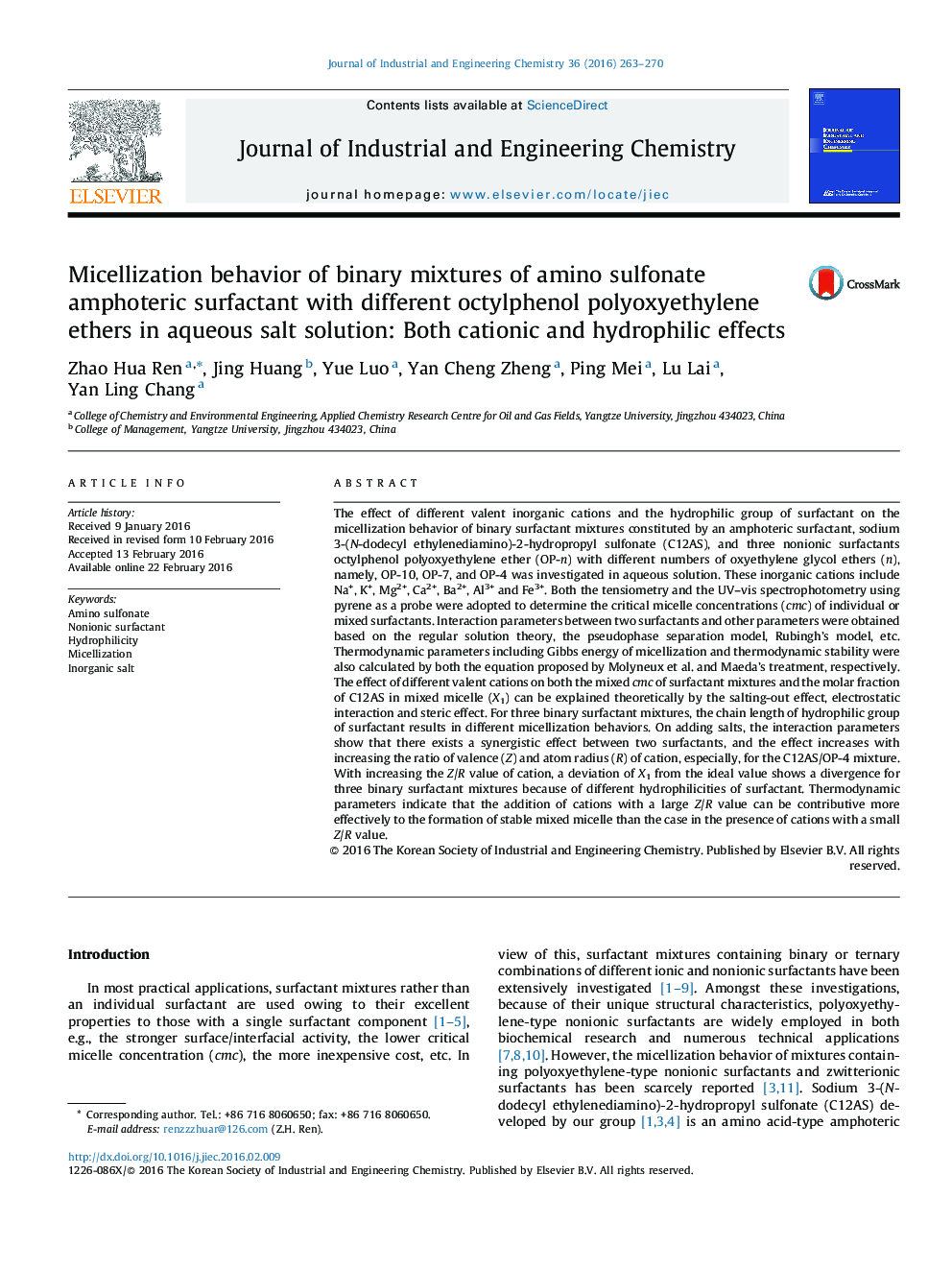| کد مقاله | کد نشریه | سال انتشار | مقاله انگلیسی | نسخه تمام متن |
|---|---|---|---|---|
| 227801 | 464828 | 2016 | 8 صفحه PDF | دانلود رایگان |
• Cation effect on micellization of amino sulfonate (C12AS) with different nonionics.
• Effect of hydrophilicity on micellization.
• Mechanism on two effects.
The effect of different valent inorganic cations and the hydrophilic group of surfactant on the micellization behavior of binary surfactant mixtures constituted by an amphoteric surfactant, sodium 3-(N-dodecyl ethylenediamino)-2-hydropropyl sulfonate (C12AS), and three nonionic surfactants octylphenol polyoxyethylene ether (OP-n) with different numbers of oxyethylene glycol ethers (n), namely, OP-10, OP-7, and OP-4 was investigated in aqueous solution. These inorganic cations include Na+, K+, Mg2+, Ca2+, Ba2+, Al3+ and Fe3+. Both the tensiometry and the UV–vis spectrophotometry using pyrene as a probe were adopted to determine the critical micelle concentrations (cmc) of individual or mixed surfactants. Interaction parameters between two surfactants and other parameters were obtained based on the regular solution theory, the pseudophase separation model, Rubingh's model, etc. Thermodynamic parameters including Gibbs energy of micellization and thermodynamic stability were also calculated by both the equation proposed by Molyneux et al. and Maeda's treatment, respectively. The effect of different valent cations on both the mixed cmc of surfactant mixtures and the molar fraction of C12AS in mixed micelle (X1) can be explained theoretically by the salting-out effect, electrostatic interaction and steric effect. For three binary surfactant mixtures, the chain length of hydrophilic group of surfactant results in different micellization behaviors. On adding salts, the interaction parameters show that there exists a synergistic effect between two surfactants, and the effect increases with increasing the ratio of valence (Z) and atom radius (R) of cation, especially, for the C12AS/OP-4 mixture. With increasing the Z/R value of cation, a deviation of X1 from the ideal value shows a divergence for three binary surfactant mixtures because of different hydrophilicities of surfactant. Thermodynamic parameters indicate that the addition of cations with a large Z/R value can be contributive more effectively to the formation of stable mixed micelle than the case in the presence of cations with a small Z/R value.
Figure optionsDownload as PowerPoint slide
Journal: Journal of Industrial and Engineering Chemistry - Volume 36, 25 April 2016, Pages 263–270
